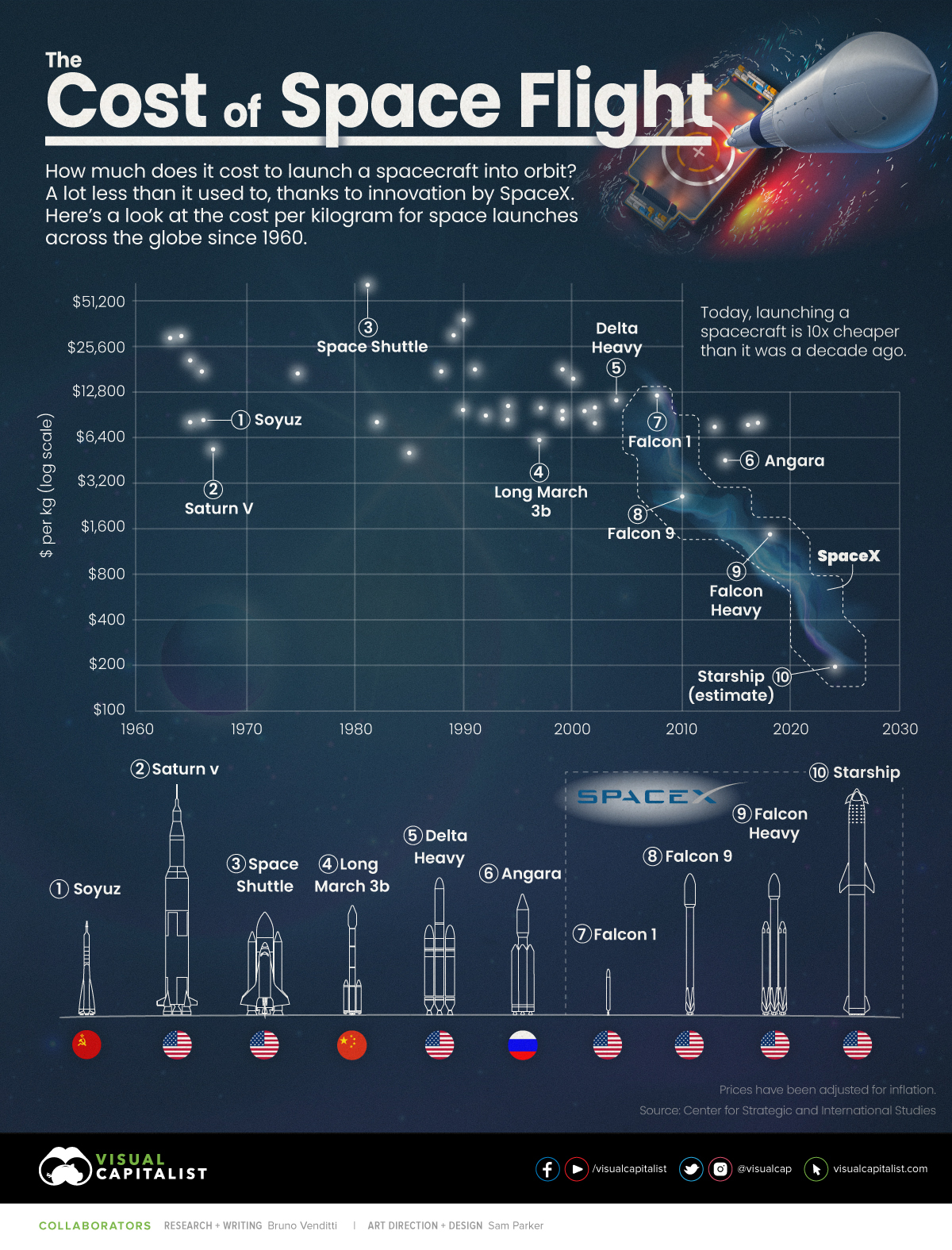- Μηνύματα
- 40.448
- Reaction score
- 99.796
Recent US Mars missions have had a cost per ton of useful load to the surface of Mars of about $1B. Moreover, it has become more, not less, expensive over time!
To build a city on Mars that can grow by itself likely requires at least a million tons of equipment, which would therefore require >$1000 trillion, an obviously impossible number, given that US GDP is only $29T.
However, if rocket technology can be improved by 1000X, then the cost of becoming sustainably multiplanetary would drop to ~$1T, which could be spread out over 40 or more years, so <$25B/year.
At that cost, it becomes possible to make life multiplanetary, ensuring the long-term survival of life as we know it, without materially affecting people’s standard of living on Earth.
Starship is designed to achieve a >1000X improvement over existing systems and, especially after yesterday’s booster catch and precise ocean landing of the ship, I am now convinced that it can work.

To build a city on Mars that can grow by itself likely requires at least a million tons of equipment, which would therefore require >$1000 trillion, an obviously impossible number, given that US GDP is only $29T.
However, if rocket technology can be improved by 1000X, then the cost of becoming sustainably multiplanetary would drop to ~$1T, which could be spread out over 40 or more years, so <$25B/year.
At that cost, it becomes possible to make life multiplanetary, ensuring the long-term survival of life as we know it, without materially affecting people’s standard of living on Earth.
Starship is designed to achieve a >1000X improvement over existing systems and, especially after yesterday’s booster catch and precise ocean landing of the ship, I am now convinced that it can work.
















